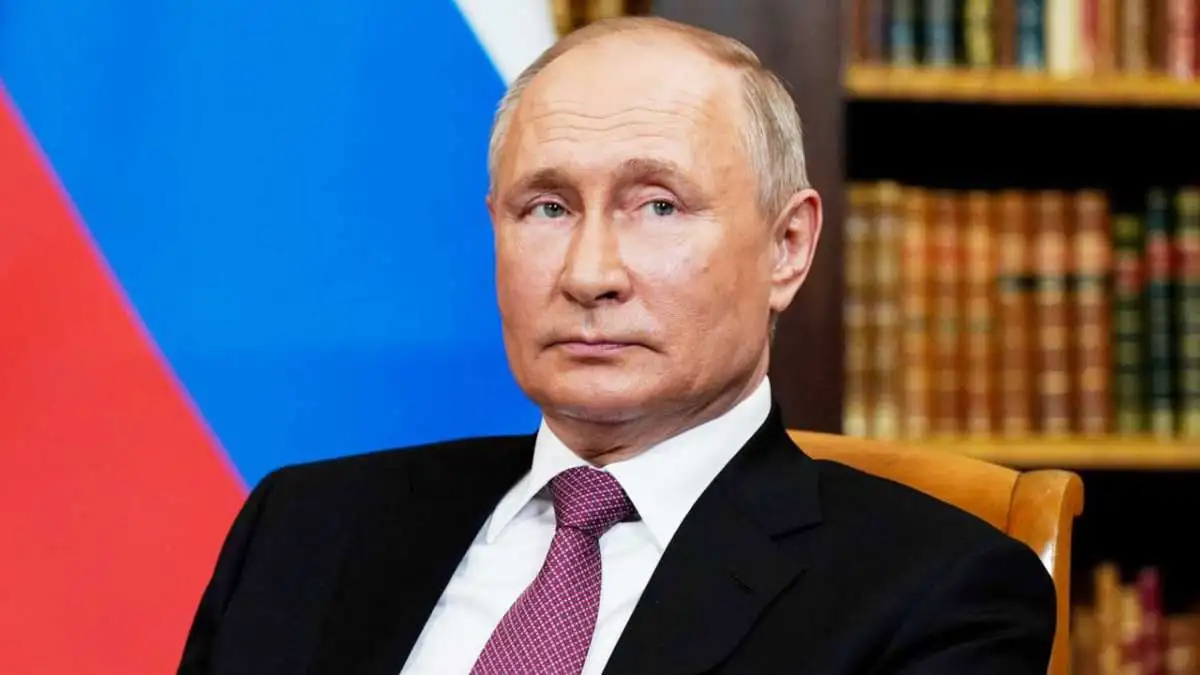The escalating threat of World War III has been brought to the forefront of global attention as Russian President Vladimir Putin issues a warning over the delivery of F-16 jets to Ukraine. The controversial move has sparked tensions between Russia and the West, with Putin condemning the decision as a provocative and dangerous escalation of the conflict in the region. The F-16 jets, known for their advanced capabilities and firepower, have become a focal point in the ongoing geopolitical struggle for influence in Eastern Europe. As the situation continues to unfold, the world watches with bated breath, fearing the potential consequences of this bold and risky maneuver.
The growing risk of a third world war has been highlighted by Russian President Vladimir Putin’s recent cautionary statement regarding the transfer of advanced fighter aircraft to Ukraine. This development has reignited long-standing tensions between Russia and Western powers, with Putin denouncing the move as a provocative and perilous escalation of the regional conflict. The delivery of the F-16 jets, renowned for their cutting-edge technology and combat capabilities, has become a pivotal issue in the ongoing power struggle in Eastern Europe. As the international community closely monitors the unfolding events, the potential ramifications of this bold and contentious decision loom large on the global stage.
Russian Threats and Western Response
Recent promises by several countries to provide Ukraine with F-16 fighter jets have sparked strong reactions from Russian President Vladimir Putin. In response to this, Putin has stated that other countries could become legitimate targets. This has raised concerns about the potential for a third world war, as stated by Swedish Lieutenant Colonel Joakim Paasikivi. He emphasized the seriousness of Putin’s threat towards EU countries planning to supply Ukraine with fighter jets. The Russian president’s warning that the use of these planes from third-party airfields would make them legitimate targets, regardless of their location, has escalated tensions.
Lieutenant Colonel Paasikivi highlighted the fact that Russia is aware it would not win a war against NATO. However, he also pointed out that attacking airbases in NATO countries would not be a wise move. Despite this, there are no guarantees in such a volatile situation. He emphasized that Russia’s actions in Europe represent the largest conflict since World War II and are being conducted without regard for the laws of war. This has led to a lack of trust in Russia’s intentions. Paasikivi also interpreted Putin’s threats and warnings as part of the Kremlin’s narrative, portraying the West as the aggressor and Russia as the victim. The focus on the so-called Western nuclear threat is central to Russia’s storytelling, according to Paasikivi.
Putin’s Concerns and Western Preparations
Putin’s specific identification of F-16 fighter jets and the potential targeting of Western assets is a new development, according to Lieutenant Colonel Paasikivi. This indicates Putin’s concern that Ukraine’s acquisition of F-16 aircraft could significantly enhance its combat capabilities. The recent increase in Ukrainian pilots receiving training in preparation for the delivery of F-16 jets has further fueled tensions. This saber-rattling from Russia comes at a time when a growing number of Ukrainian pilots are undergoing training ahead of the arrival of the F-16 aircraft. This has raised concerns about the potential for a conflict that could escalate into a global scale. A recent survey revealed that a significant portion of the population believes there is a substantial risk of a third world war in their lifetime, reflecting the widespread unease and uncertainty surrounding the current geopolitical situation.
F-16 Jets to Ukraine
| Country | Item | Quantity |
|---|---|---|
| United States | F-16 Jets | 12 |
RESULT
The United States has agreed to provide 12 F-16 fighter jets to Ukraine to support its defense capabilities. This decision comes in the context of ongoing tensions between Ukraine and Russia, and is aimed at bolstering Ukraine’s ability to defend its sovereignty and territorial integrity.


